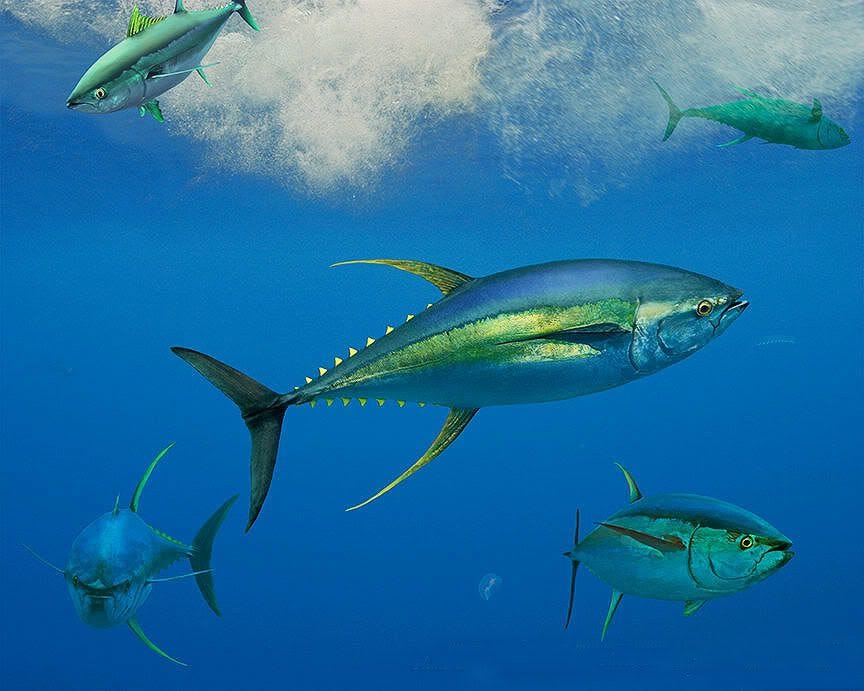It may not come off as the sexist fish, but tuna is in high demand. According to the National Fisheries Institute, canned tuna is the second most popular seafood item in the United States after shrimp and represents over 1/3 of the total seafood segment. The United States, European Union, and Japan consume 88 percent of the worlds tuna. Nearly half of American households eat canned tuna at least once a month, and tuna is a big lunch food. Tuna can be used in salads, sushi, pasta, sandwiches, wraps, and so much more; it's a versatile fish, but when you buy tuna, are you truly getting it?
According to Huff Post, a study by Oceana found that 21 percent of market and grocery tuna was mislabeled. According to Oceana, this is a rampant problem that plagues the seafood industry, with tuna being the second most mislabeled fish. So if it's not tuna, what is it? Likely: escolar.
Escolar is nothing like tuna. It's an inferior quality fish (and it's uglier too). In their study, Oceana found that 84 percent of white tuna samples that they tested were actually escolar. "White tuna" should raise a red flag, considering there is no such fish as white tuna. Albacore is the lightest tuna, while Yellowfin, Ahi, and Bluefin are the darker types. And according to Oceana, the biggest offenders are sushi restaurants. 74 percent of samples tested were fakers.
So what's the big deal? Is there really one? Well, if you ordered or purchased tuna, isn't that what you want to get? Not only is it misleading, but escolar is a pretty poor replacement. So poor, it has been banned in Japan since 1977 and is banned in Italy. In the European Union, escolar has to be sold with health warnings. The FDA had a bulletin in the '90s advising against selling escolar, but I presume someone lobbied that in Washington because it was taken down. While escolar does have a fine taste thanks to its fats, its fats comes from wax esters, which humans can't digest. Consuming too much escolar can cause diarrhea and...anal leakage. Its a swimming laxative.
So how can you spot escolar vs tuna? One big way is price. If the price is too good to be true, it is. When it comes to color, escolar is milky white. And if you get fish from a fish market, make sure the fishmonger can tell you where it came from. According to Mother Jones, escolar has gone through rebrandings, now being labeled as "white tuna", "butterfish", "hawaiian walu", and "rudderfish." This picture gives a great visual. If you do get an escolar craving and have to satisfy your fix, start with portions under six ounces and go for meat closer to the tail. Freezing it and cooking it various ways does not make much a difference according to a report on escolar from Nick Ruello.
While escolar has been shown to be a faker, one thing that is not fake in tuna is mercury. Mercury is a naturally occurring element. Burning coal and erupting volcanoes emit it. Mercury in the atmosphere eventually ends up in the oceans and lakes, where it builds up in marine life. Tuna contains more mercury than oysters, salmon, scallops, and tilapia. Tuna feed more on smaller, contaminated fish. And since it can't be excreted easily, it builds in tuna tissues over time, the same way fat builds up in our bodies. Light tuna contains the lesser amounts of mercury, while bigeye tuna contains the most. Albacore and yellowfish fall in the middle with 0.350 to 0.358 ppm. High exposure to mercury can lead to brain cell death, depression, heart disease, and impaired motor skills.
So should you cut tuna out? Honestly, no. While mercury is a concern, tuna is packed with vitamins, healthy fats, and protein. Like most foods, moderating it in your diet is better. 2 to 3 times a week is all you need to get a healthy amount of omega 3's. Healthline breaks it down the best.
The mislabeling problem is not exclusive to tuna. Always research your food and make sure it comes from where you expect it, and the product is what you wanted to get. Escolar tried it, but it'll never replace tuna. And canned tuna has done a great job of avoiding the escolar problem. Your Starkist tuna salads are safe.
sources: National Fisheries Institute, Oceana, Huff Post, Mother Jones, Healthline
